How to Avoid Injury While Shoveling Snow
Our first few “shovel-worthy” snowstorms of the year have come and gone. Without fail, in the days following a big storm I can always expect to have a few people that are desperate to get into PT because they “tweaked their back” or “hurt their shoulder”.
Why is it so common for people to injure themselves shoveling snow? Ultimately, it comes down to body mechanics and posture. Next time you find yourself needing to shovel snow off the sidewalk or out of your driveway, take these tips into account:
1. Shovel several times throughout the storm
This tip is probably the most effective way to avoid injury while shoveling. Now, I realize it is not always feasible to shovel multiple times during a storm because, depending on when the storm hits, you may not be home to take care of shoveling every couple hours. Nonetheless, when it’s possible to apply this tip, it’s one of the most effective!
It probably stands to reason that the more snow there is to shovel, the heavier the shovel becomes, the more weight you have to repetitively lift to clear the snow, and the higher the risk of injury. So, if you are able to clear your driveway/sidewalk early and often, only shoveling 2-4 inches of snow at a time, your body will thank you!
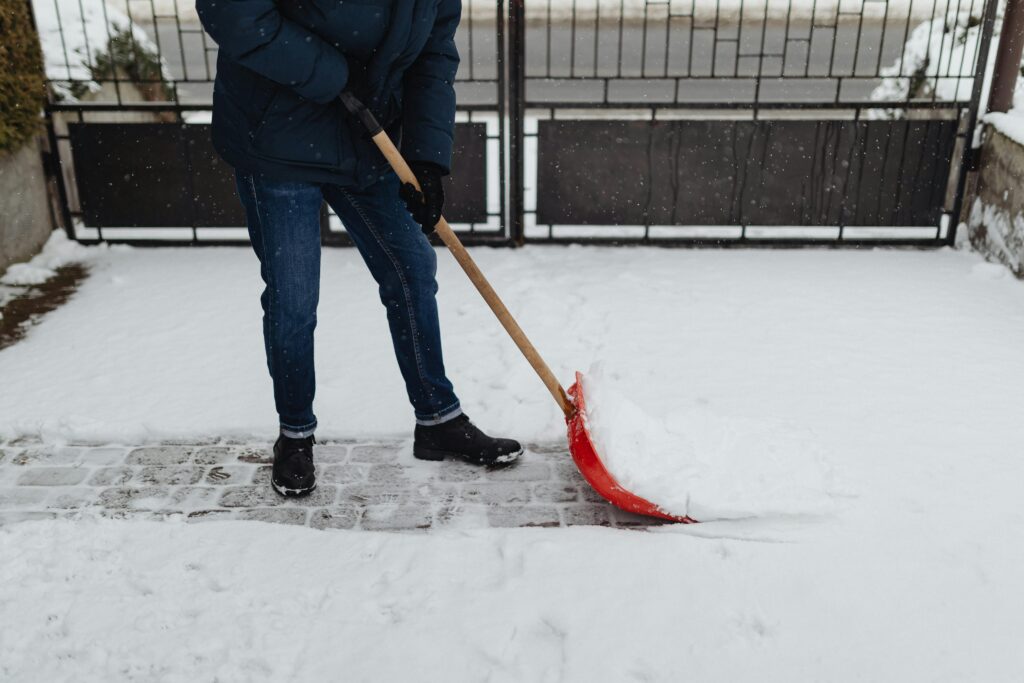
2. Stick your booty out!
If you’ve ever had experience with weightlifting, deadlifting in particular, you have probably been told to keep your back flat and don’t let it round. This is because, when lifting from the ground with a rounded spine, the pressure in the discs in your spine goes up. This can potentially put you at risk for injury, especially if your spine is not accustomed to such forces.
Shoveling snow is no different. You are still lifting a weight from the ground, and you should still keep your back flat so the force is placed on your glutes and hamstrings to lift the weight, rather than your spine. I find the cue to “stick your booty out”, rather than letting it “tuck under” makes it easy to visualize. As shown in the photos, when you “stick your booty out”, the low back automatically flattens out, which ultimately protects the spine from those increases in pressure.

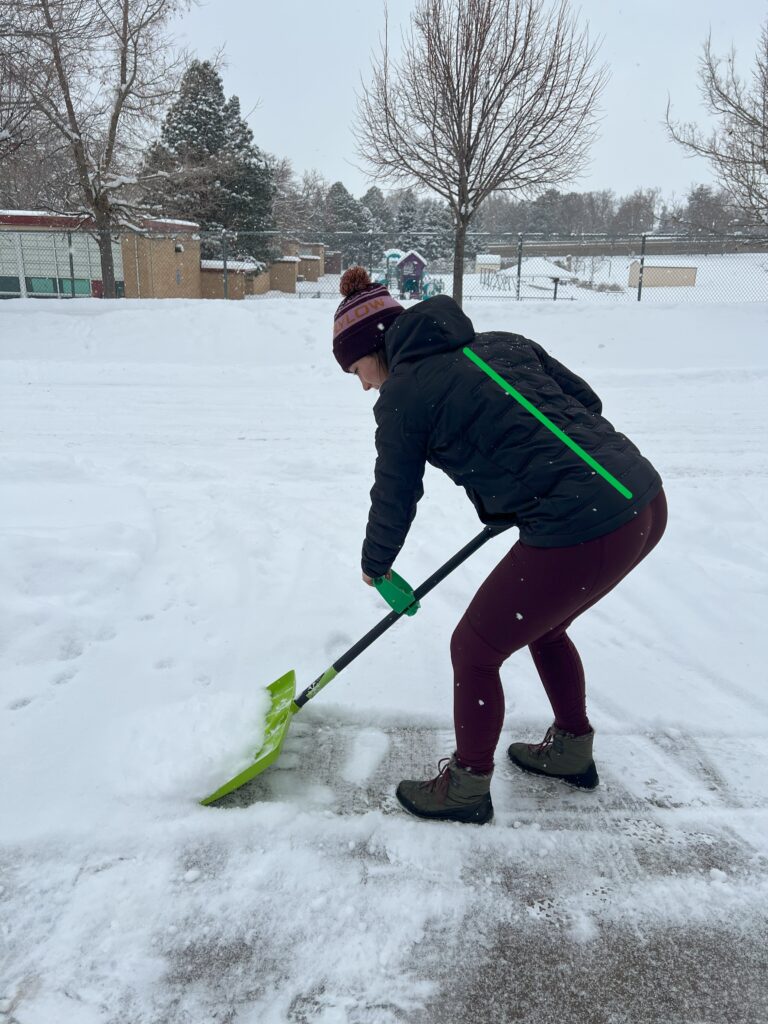
3. Step close to the full shovel before lifting
Lets imagine you are holding a full gallon of milk in your hand. First, imagine you are holding the gallon close to your chest. Then, imagine you are holding it out in front of you with your arm outstretched. Which one feels heavier?
The farther the weight is away from your body, the heavier it becomes because the lever arm your muscles and joints have to support becomes longer. That being said, the farther away your full shovel is from your body, the more strain will be placed on your back and shoulders. On the flip side, the closer the full shovel is to your body, the less strain on your back and shoulders.
Next time you wedge your shovel under a pile of snow, before you lift, take a step forward so the pile of snow on your shovel is as close to your feet as possible, THEN lift!

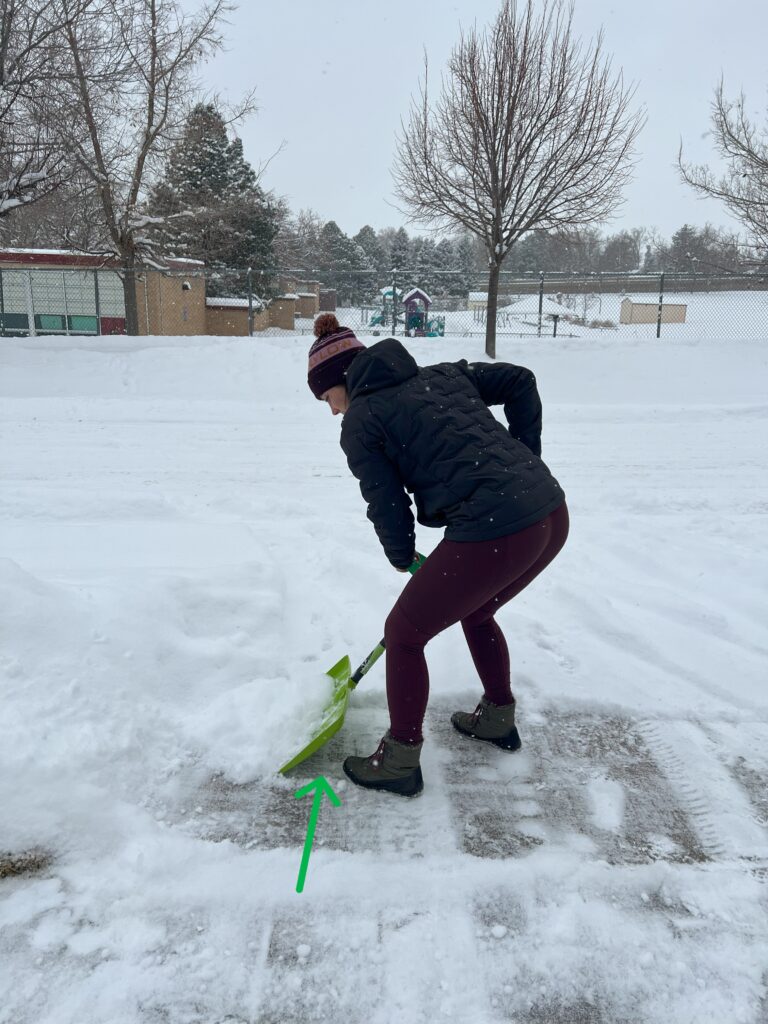
4. Walk over to the dumping spot
More often than not, injuries while shoveling don’t usually occur with the first lift, but rather with the “twist and fling” part of the movement. This is because load on the spine increases with the first lift. This load exponentially increases when you twist while loaded. Inherently, twisting a spine that is loaded is not a bad thing. In fact, I would argue it is a necessary part of functional strength. However, when your spine is not accustomed to those types of forces – that is, you never load your spine and move that way – suddenly doing it repeatedly can lead to injury.
That being said, the safest way to unload your full shovel is to physically walk to the dumping area, rather than keeping your feet planted and taking the “twist and fling” approach. Remember to take small steps and be careful of ice as you walk!
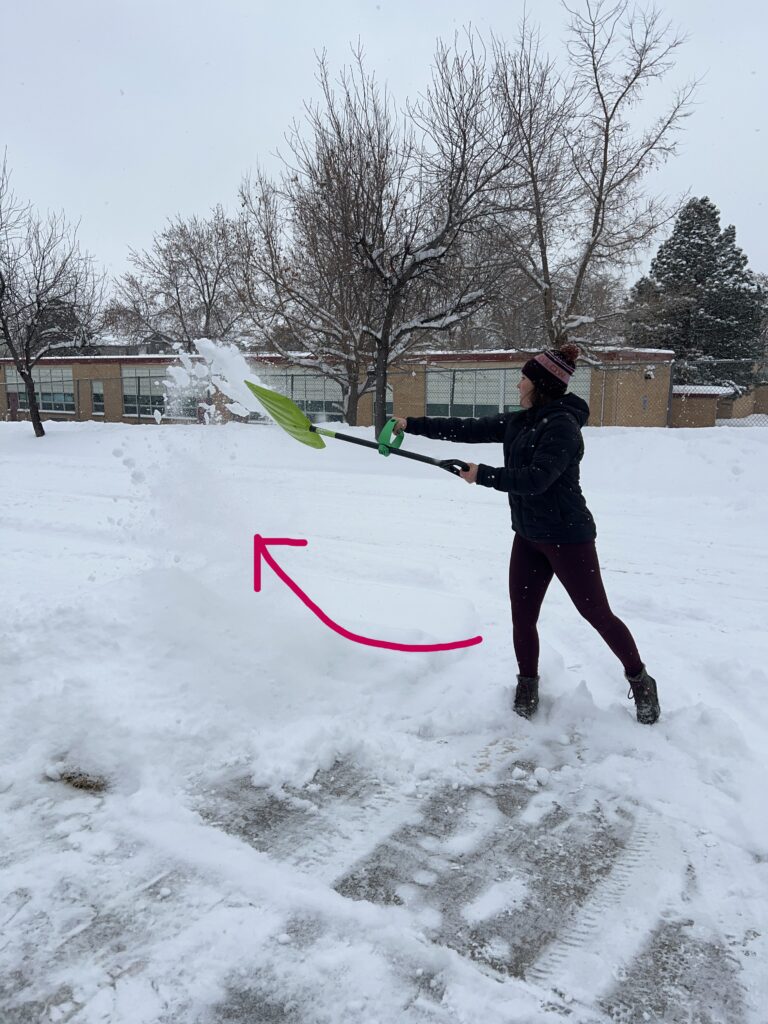
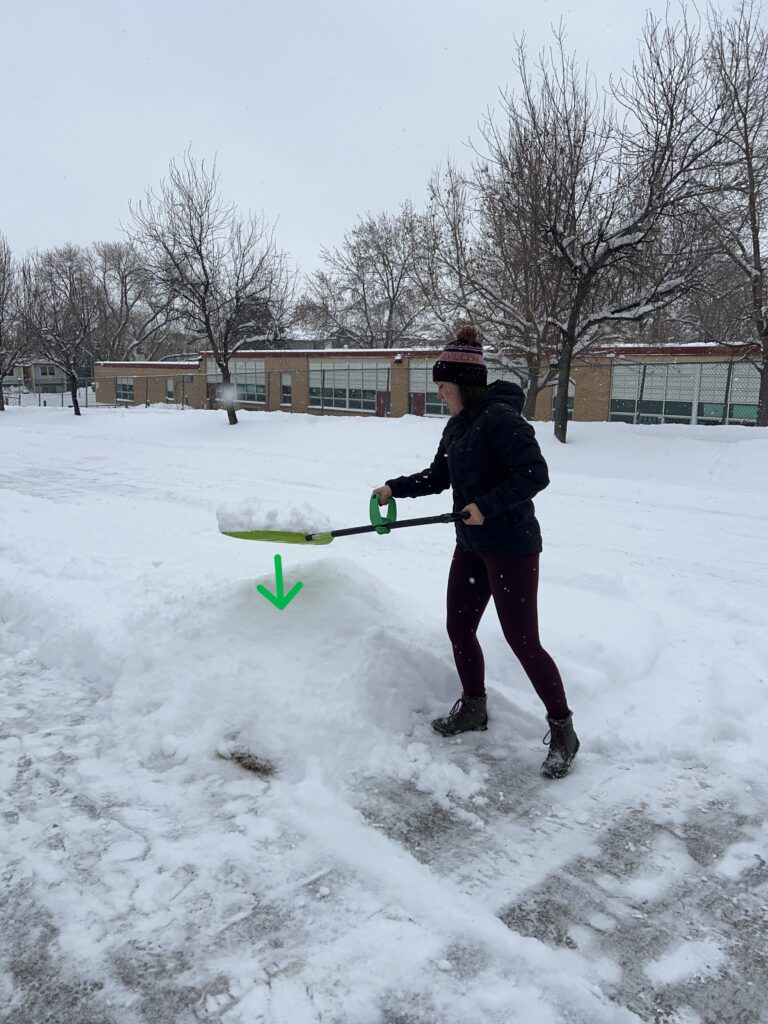
Hopefully these tips will help you keep your back and shoulders healthy and happy during the next snow storm! If you already fell victim to injury during our first storm and feel you could benefit from a physical therapy assessment, click “Schedule My Free Consultation” below to chat with one of our team members to determine if PT is right for you.
Contact Us Today
Not sure where to start?
Schedule your free 15-minute consultation.
Returning client or ready to get started with therapy today? Call us to schedule your appointment.
